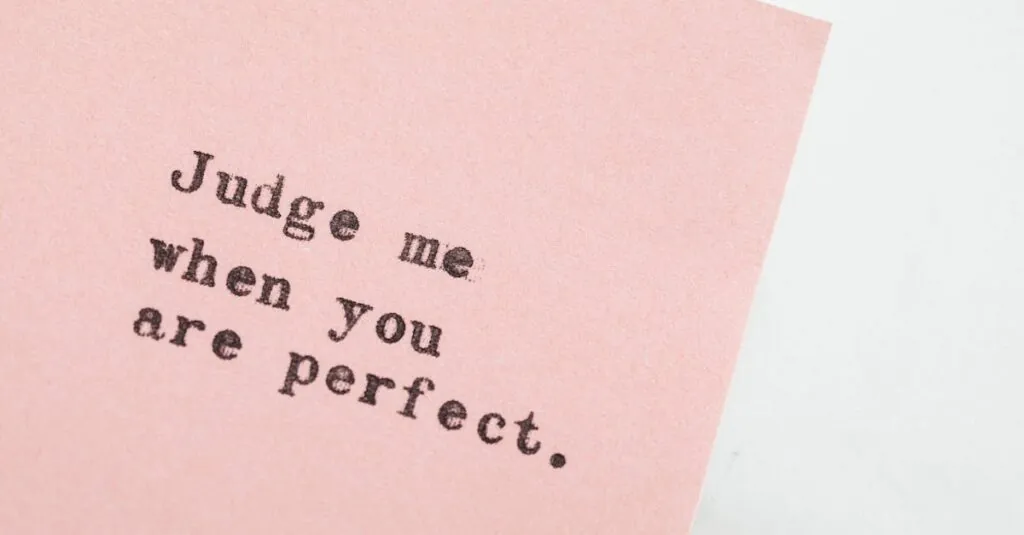Crafting a letter of motivation can feel like trying to bake a soufflé—one wrong move and it might just collapse. But don’t worry, it’s not rocket science. This essential document is your golden ticket to showcasing your passion and personality, and it can make all the difference in landing that dream opportunity.
Table of Contents
ToggleWhat Is a Letter of Motivation?
A letter of motivation serves as a personal statement showcasing an individual’s intentions, goals, and qualifications. This document typically accompanies applications for academic programs, scholarships, or job positions. It allows candidates to articulate their passion for a specific field. Personal experiences often play a crucial role in reinforcing the applicant’s dedication and suitability.
Candidates use this letter to highlight achievements and aspirations. Presenting relevant skills and experiences can significantly enhance an application. Insights into personal motivation and career objectives often capture the reader’s attention. Many selection committees view these letters as a reflection of the applicant’s personality, providing context beyond what resumes outline.
Structure typically includes an introduction, body paragraphs, and a conclusion. An introduction establishes the purpose. Main body paragraphs discuss relevant qualifications, experiences, and future ambitions. Concluding remarks reiterate the applicant’s enthusiasm and convey gratitude for the opportunity.
In writing a letter of motivation, clarity and conciseness are vital. Addressing the recipient directly can create a personal connection. Engaging language engages readers, ensuring the message resonates. Tailoring the content focuses on specific opportunities, making the letter stand out. Including specific examples strengthens statements, making them more compelling.
Overall, a letter of motivation plays a significant role in academic and professional pursuits. Effectively presenting qualifications and aspirations increases the chance of success. This document provides an opportunity for individuals to showcase their unique qualities and motivations.
Importance of a Letter of Motivation
Crafting a letter of motivation significantly impacts an application by highlighting an individual’s passion and goals. This document, often accompanying applications for academic programs or job positions, conveys personal intentions and qualifications.
Personalizing Your Application
Tailoring a letter of motivation to specific opportunities enhances authenticity. Individuals should mention the program or organization directly to show genuine interest. Including relatable experiences and personal anecdotes sets candidates apart from others. Demonstrating knowledge about the institution or company reflects commitment and preparation. Customizing language and tone to align with the recipient’s expectations further strengthens the connection. A personalized approach illustrates genuine enthusiasm and makes the applicant more memorable.
Making a Strong First Impression
Creating a strong first impression starts with an impactful introduction. Engaging language captures the reader’s attention immediately. Highlighting unique personal attributes invites interest, ensuring deeper reading. Stating motivations clearly establishes context and relevance right away. Providing specific examples of achievements or aspirations enhances credibility. A polished opening sets the tone, encouraging the recipient to continue reading. Attention to detail in format and grammar also contributes to a professional presentation, crucial for making a lasting impression.
Key Elements of a Letter of Motivation
A letter of motivation should clearly communicate an individual’s intentions and aspirations. Understanding its key components enhances effectiveness.
Structure and Format
A well-structured letter follows a specific format. Begin with a professional header, including the sender’s and recipient’s addresses. An engaging introduction captures attention. The body contains concise paragraphs detailing motivations, experiences, and goals. Each paragraph should flow logically, leading to the conclusion. Maintaining consistent font style and size ensures readability. Avoid unnecessary decorations; professionalism is paramount.
Content to Include
Including specific content is essential for impact. Candidates should articulate their motivations clearly. Examples of relevant achievements strengthen claims. Personal anecdotes humanize the narrative, providing insight into character. Mentioning specific aspects of programs or organizations illustrates commitment. Demonstrating knowledge about the field showcases thorough preparation. Tailored language aligns with the recipient’s expectations, enhancing relatability. Balancing personal insights with professional experiences creates a well-rounded presentation.
Tips for Writing an Effective Letter of Motivation
Writing a letter of motivation requires attention to detail and a personalized approach. Below are key tips to enhance the effectiveness of this essential document.
Tailoring to Specific Programs or Jobs
Address the specific program or job within the letter. Highlight unique aspects that resonate with personal experiences or passions. Mention the organization’s values or mission to demonstrate genuine interest. Candidates should describe how their goals align with the specific opportunity. Referencing the program’s strengths can convey enthusiasm and preparation. Involving specific examples makes the connection clearer and strengthens the argument for candidacy. Personalization significantly boosts the likelihood of making a lasting impression.
Language and Tone
Utilize professional yet engaging language throughout the letter. Active voice enhances clarity and makes the writing more dynamic. Avoid overly complex jargon that may alienate the reader. Striking the right tone can reflect personality while remaining respectful and formal. Candidates should adapt the language to fit the expected standards of the institution or organization. Contractions are acceptable and can make the letter feel more approachable. Maintaining a consistent tone throughout ensures cohesiveness and keeps the reader engaged.
Common Mistakes to Avoid
Creating a letter of motivation requires attention to detail. Failing to customize the letter for each specific program or job leads to a generic impression. Skipping personal anecdotes often results in a lack of authenticity. Avoid using overly complex language; clarity matters more than grandiosity.
Neglecting to proofread can have serious repercussions. Typos and grammatical errors signal carelessness to the reader. Inconsistent formatting disrupts flow and muddles the overall presentation. Each paragraph must maintain a uniform style, enhancing readability.
Relying solely on clichés detracts from individuality. A letter that echoes common phrases fails to make a memorable impact. Instead, showcasing unique experiences helps candidates stand out. Specific achievements should complement character traits, illustrating depth.
Ignoring the word count is another critical misstep. Keeping the letter concise and focused ensures engagement. Overly lengthy letters can lead to reader disengagement and loss of pivotal points. Aim to convey essential information without excessive elaboration.
Presenting motivations unclearly also undermines effectiveness. Articulating clear reasons for pursuing a particular opportunity strengthens the argument. Connecting personal ambitions to the specific program or job creates a solid foundation.
Finally, overlooking the importance of a strong introduction detracts from the overall effect. Captivating openings set a positive tone and engage the reader from the start. A compelling start combined with thoughtful content leads to a powerful letter of motivation.
A well-crafted letter of motivation is more than just a formality; it’s a powerful tool that can open doors to new opportunities. By clearly articulating intentions and showcasing personal experiences, candidates can create a compelling narrative that resonates with their audience.
Personalization is key in making a lasting impression. Tailoring content to specific programs or organizations not only demonstrates commitment but also highlights a candidate’s unique qualifications.
Attention to detail and a professional presentation further enhance the effectiveness of the letter. With a thoughtful approach, individuals can confidently express their passions and aspirations, significantly boosting their chances of success in their academic and professional journeys.





